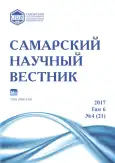Innovative technology «Flipped Classroom» use in foreign language teaching at a technical university
- Authors: Yurina M.V.1, Lopukhova Y.V.1
-
Affiliations:
- Samara State Technical University
- Issue: Vol 6, No 4 (2017)
- Pages: 262-266
- Section: 13.00.00 – Pedagogical Sciences
- URL: https://journals.rcsi.science/2309-4370/article/view/22369
- DOI: https://doi.org/10.17816/snv201764315
- ID: 22369
Cite item
Full Text
Abstract
The following paper considers the application of innovative technology «flipped classroom» in foreign language teaching combining with the team learning at a technical university. The new approach to teaching is caused by the increasing role of self-education within the framework of cultural competence of modern specialist. So the modern educational technologies have to develop student’s learning skills. The advantages presented by the «flipped classroom» technology are the increasing time for the individual work with students, the opportunity to provide additional cultural knowledge through a careful selection of the learning content on the one hand, as well as developing of the student’s ability to self-organization and self-education on the other. The paper presents the main approaches to the definition of the «flipped classroom» technology, its advantages and disadvantages, possible technical difficulties and the positive effect that can be achieved while using the «flipped classroom» technology at a technical university.
Full Text
##article.viewOnOriginalSite##About the authors
Mariya Valerievna Yurina
Samara State Technical University
Author for correspondence.
Email: urri_2000@mail.ru
candidate of philological sciences, associate professor of Linguistics, Cross-Cultural Communication and Russian as a Foreign Language Department
Russian Federation, SamaraYulia Victorovna Lopukhova
Samara State Technical University
Email: j.v.lopukhova@mail.ru
doctor of pedagogical sciences, professor of Linguistics, Cross-Cultural Communication and Russian as a Foreign Language Department
Russian Federation, SamaraReferences
- Biggs J., Tang C. Teaching for quality learning at university: What the student does. Open University Press, New York, 2011. 389 p.
- Bergmann J., Sams A. Flip your Classroom. Reach Every Student in Every Class Every Day. U.S.A.: International Society for Technology in Education, 2012.
- Симонова М.В. «Перевернутый класс» на занятиях по испанскому языку в вузе // Актуальные аспекты фундаментальных и прикладных исследований: сборник научных трудов. Орёл, 2016. С. 48-55.
- Брыксина О.Ф. Инновационные технологии в образовании: где найти точку опоры, чтобы перевернуть урок? // Поволжский педагогический вестник. 2015. № 3 (8). С. 53-57.
- Вульфович Е.В. Организация самостоятельной работы по иностранному языку на основе модели «перевёрнутый класс» // Высшее образование в России. 2017. № 4 (211). С. 88-95.
- Зверева Е.В. Модель перевернутого урока (Flipped Classroom) как одна из техник обучения иностранному языку // Инновационность и мультикомпетентность в преподавании и изучении иностранных языков. М., 2015. С. 446-456.
- Квашнина О.С., Ажель Ю.П. Анализ педагогической модели «перевёрнутый класс» в преподавании английского языка как иностранного в техническом вузе // Alma mater (Вестник высшей школы). 2016. № 6. С. 108-112.
- Литвинова С.Г. Технология «перевернутое обучение» в облачно-ориентированной учебной среде как компонент развития медиаобразования в средней школе // Медиасфера и медиаобразование. 2015. С. 233-247.
- Литонина Н.В. Flipped Classroom как способ обучения фонетике на основе развития автономности личности // Высшее образование сегодня. 2015. № 8. С. 49-52.
- Логинова А.В. Особенности и принципы функционирования педагогической модели «перевернутый класс» // Молодой ученый. 2015. № 9. С. 1114-1119.
- Marshall H. Three reasons to flip your classroom [El. resource] // Bilingual Basics. August, 2013. - http://newsmanager.commpartners.com/tesolbeis/issues/2013-08-28/6.html.
- Graney J. Flipping Your EL Classroom: A Primer [El. resource] // http://newsmanager.commpartners.com/ tesolc/downloads/features/2013/2013-10_flippedclass-rooms_graney.pdf.
- Muldrow K. A New Approach to Language Instruction - Flipping the Classroom [El. resource] // https://actfl.org/sites/default/files/pdfs/tle_pdf/tle_nov13_article.pdf.
- Новые педагогические и информационные технологии в системе образования: учеб. пособие для студ. высш. учеб. заведений / Е.С. Полат, М.Ю. Бухаркина, М.В. Моисеева, А.Е. Петров; под ред. Е.С. Полат. М.: Издательский центр «Академия», 2009. С. 33-34.
- Лопухова Ю.В. Формирование ответственного отношения студентов педагогического колледжа к учению. Самара: Издательство СамГПУ, 2001. 108 с.
- Уроки школьной программы [Электронный ресурс] // https://interneturok.ru.
- Учительский портал [Электронный ресурс] // http://uchportal.ru.
- Виртуальная академия [Электронный ресурс] // http://virtualacademy.ru/videouroki.
- The internationalisation agency [El. resource] // https://daad.de/der-daad/ueber-den-daad/portrait/en/ 29143-the-internationalisation-agency.
Supplementary files






